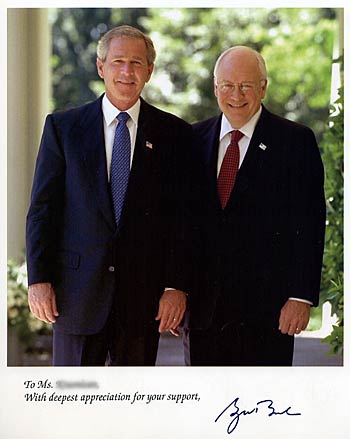Intestinal Pseudo-Obstruction
Intestinal pseudo-obstruction is a rare condition with symptoms like those caused by a bowel obstruction, or blockage. But when the intestines are examined, no blockage is found. Instead, the symptoms are due to nerve (visceral neuropathy) or muscle (visceral myopathy) problems that affect the movement of food, fluid, and air through the intestines. The intestines, or bowel, include the small intestine and the large intestine, also called the colon.
Intestinal pseudo-obstruction can occur in people of any age, but it occurs more often in children and older adults. Children can have a long-lasting form of the condition called chronic intestinal pseudo-obstruction (CIP). CIP in children is usually present at birth.
Learn more here about CIP in children.
In another form of intestinal pseudo-obstruction that mostly affects older adults, the colon becomes enlarged after surgery or illness. This condition is known as acute colonic pseudo-obstruction (ACPO), also called Ogilvie syndrome or acute colonic ileus. ACPO can lead to serious complications and can be life-threatening.

What causes intestinal pseudo-obstruction?
Normally, nerves and muscles work together to produce wavelike contractions that push food through the intestines. In intestinal pseudo-obstruction, nerve or muscle problems prevent normal contractions. As a result, people with the condition have problems with the movement of food, fluid, and air through the intestines.
When the cause of the nerve or muscle problems leading to intestinal pseudo-obstruction is not known, the condition is called primary or idiopathic intestinal pseudo-obstruction. If the cause is known, the condition is called secondary intestinal pseudo-obstruction. Causes of secondary intestinal pseudo-obstruction include:
- abdominal or pelvic surgery
- diseases that affect muscles and nerves, such as lupus erythematosus, scleroderma, and Parkinson's disease
- infections
- medications such as opiates and antidepressants that affect muscles and nerves
What are the symptoms of intestinal pseudo-obstruction?
Intestinal pseudo-obstruction symptoms may include cramps, abdominal pain, nausea, vomiting, bloating, and constipation. Occasionally, intestinal pseudo-obstruction may cause diarrhea. Over time, the condition can cause bacterial infections, malnutrition, weight loss, and muscle problems in other parts of the body. Some people develop problems with their esophagus, stomach, or bladder.
How is intestinal pseudo-obstruction diagnosed?
To diagnose intestinal pseudo-obstruction, the doctor will take a complete medical history, do a physical exam, and take x rays. The doctor will make sure that symptoms are not due to an intestinal blockage and will look for the cause of the condition, such as an underlying illness. Other testing may be needed, such as manometry to measure the patterns of intestinal contractions.
How is intestinal pseudo-obstruction treated?
People with intestinal pseudo-obstruction often need nutritional support to prevent malnutrition and weight loss. Enteral nutrition provides liquid food through a feeding tube inserted through the nose into the stomach or placed directly into the stomach or small intestine. Some people need intravenous feeding, also called parenteral nutrition, which provides liquid food through a tube placed in a vein.
If intestinal pseudo-obstruction is caused by an illness or medication, the doctor will treat the underlying illness or stop the medication.
Treatment may include medications, such as antibiotics to treat bacterial infections, pain medication, and medication to treat intestinal muscle problems. People with ACPO may need procedures to remove gas from the bowel. In severe cases of intestinal pseudo-obstruction, surgery to remove part of the intestine or other intestinal surgery might be necessary.
Points to Remember
- Intestinal pseudo-obstruction is a condition with symptoms like those caused by a bowel obstruction, or blockage. But when the intestines are examined, no blockage is found.
- Intestinal pseudo-obstruction is caused by nerve or muscle problems that prevent the intestines from contracting normally to move food, fluid, and air through the intestines.
- Symptoms may include cramps, abdominal pain, nausea, vomiting, bloating, constipation, and occasionally diarrhea.
- Treatment depends on the type and severity of intestinal pseudo-obstruction and may involve nutritional support, medications, surgery, or other procedures.
Source: http://www1.cbn.com/700club/delivered-digestive-disorder
LeAnne remembers, “He wasn’t gaining weight and then he was losing weight.”
Mike says, “He would eat and swallow but then it would spit right back up, he would not be able to hold anything down so he just was not growing.”
Mike and LeAnne Gunderson were desperate for solutions. Their newborn baby Christopher was born with chronic pseudo obstruction syndrome. It’s a rare condition that paralyzed his stomach and parts of his intestines. He was unable to digest any nutrients or even take water.
“I’d pray every night and not know what the end game was. Not knowing if he was going to die or if he was going to make it or what that looked like,” says Mike. We just had to enjoy the time that we had with him because we didn’t know how long that was going to be.”
LeAnne says, “There was no way to fix it. The only thing they could do was make him grow. The issue was not, ‘How are we going to cure it.’ The issue was, ‘how are we going to keep him alive? How are we going to get nutrition into his body to keep him alive and help him grow?’”
Baby Christopher went through several major surgeries before doctors came up with a permanent solution. They connected a feeding tube directly into his intestines, bypassing his stomach. Then they put a second port into his stomach to pump out bile and saliva.
“It was a really tough time” says LeAnne, “but I always heard this little voice when I’d get upset just whisper in my ear, ‘Don’t worry, it will all work out in the end.’”
The surgery allowed him to lead a normal, active life. But he grew up unable to eat or drink without painful stomach aches and vomiting,
Christopher, now 18 years old remembers his childhood. “I could do everything that everybody else could do but just differently. It was like a normal life for me. I tried food but I just couldn’t swallow it. I had to chew it and spit or I had to drain it out of my top tube at the end of the day.”
LeAnne says, “We just figured it out because we wanted him to live a normal life. We didn’t want him to be, ‘Oh I have these feeding tubes, I can’t do this and that.’ We wanted him to be able to figure out, ‘Yep I have these feeding tubes and it’s good because if I didn’t I wouldn’t be alive and I’m just going to praise God for that and I’m going to figure out ways around to do other things.’”
He wore a backpack that pumped formula into his feeding tube during the day - an IV pole fed him at night. Christopher lived with his condition for 16 years, until one day his family brought him to a healing service led by evangelist Bruce Van Natta.
Christopher says, “During the whole sermon that he was talking, I felt like a pulse in my stomach the whole entire time.”
After the service Bruce gathered Christopher and his family together and prayed for a miracle healing.
Mike says, “I actually think I had my hand on Christopher’s shoulder and it just felt like his whole body was just shaking.”
LeAnne says, “That G tube is vibrating just really super, super fast underneath his T-shirt and I noticed this so I’m looking at it, and I’m watching it and I’m thinking, ‘I’ve never seen it do that before.’ And then that vibration starts to follow the pattern of his intestines. I can see it moving down his stomach down into the second tube which is the J tube and then the J tube started doing it too, and the whole thing is just doing this.”
Christopher says, “I felt just a big shock go through my shoulder and through my stomach and the pulsing. It felt like, like a pounding feeling in my stomach.”
Leanne says, “You just knew what was happening and that he was being healed. I knew when we got out to the parking lot we were standing there like, ‘What just happened?’ It was one of those moments. It was one moment in time that changes everything.”
“What I really feel like is that was God jumpstarting my stomach back up with a shock,” says Christopher.
That night his family went out to dinner and Christopher ate the first full meal of his life - with no complications.
Christopher says, “I just started swallowing more and more and I got a bigger and bigger smile on my face and I had a really good time. It was one of the best days of my life. I just swallowed as much as I could and had the whole plate can and had a nice drink too.”
Christopher has been healed completely and his feeding tube has been removed. Mike and LeAnne say they are thankful for the long journey that brought a miracle healing to their son.
“The harder the journey the better the reward. That’s kind of the way I look at it now is it was a long journey and wow! What a reward.” says Mike.
“God is so good and He is so big and so compassionate and He can heal anything,” says LeAnne. “Nothing is impossible for God. What is impossible for man is not impossible for God. Everything is possible for Him.”

































No comments:
Post a Comment